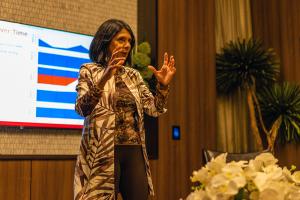
From science most significant biology project, identifying the human genome, Houston GeOME Analytics are now making headlines throughout the energy industry.
HOUSTON, TEXAS, USA, January 12, 2023 /EINPresswire.com/ — Costing around $3bn over nearly 13 years, ‘The Human Genome Project’ has been one of science most remarkable developments in recent times. During this project, GeOME’s technology contributed sequencing of around 50% of the human genes. Decades of research have gone into developing and finetuning GeOME’s algorithm and methodology. Now, the same technology is being used by the oil and gas industry to optimize production and planning.
“We received several requests from oil and gas operators asking if we could apply our DNA sequence methodology subsurface. Even though we are in Houston, the ‘Energy Capital’ of the world, it was remarkable that the energy industry looked at biology as a way of optimizing its operations. We then partnered with a large global operator, and nearly 3 years later, we have fully qualified the technology. We are now mapping the stratigraphy in ways previously not possible”, says Gunaratne Preethi, CEO and founder of GeOME Analytics.
The energy industry has years of track record in developing new and groundbreaking technology. Applying cancer biotechnology in optimizing well planning and production may appear surprising at first. When looking below the surface however, these are microbial environments developed over thousands of years that are dominant in the stratigraphic layers that exist today. Which of the operators are using this, and what the benefits and savings are, are not disclosed.
“Unfortunately, current clients and cost savings are confidential, but the technology use is not. We use subsurface microbial DNA, on- or offshore, and with our technology, analyze what is present, and non-existing to accurately determine production details by benches, reservoir allocation or other detailed data. If correlating to our cancer research, it is like ‘Lineage Tracing’ where the metastatic breast cells from the bone, helps correct the diagnosis of breast cancer. Subsurface tracing is similar, it is just less complex tracing microbes in distinct stratigraphic layers, compared to cancer cells that may have travelled all over the human body”, Preethi corroborates.
Thor Lovland
GeOME Analytics
email us here
Visit us on social media:
LinkedIn
![]()
